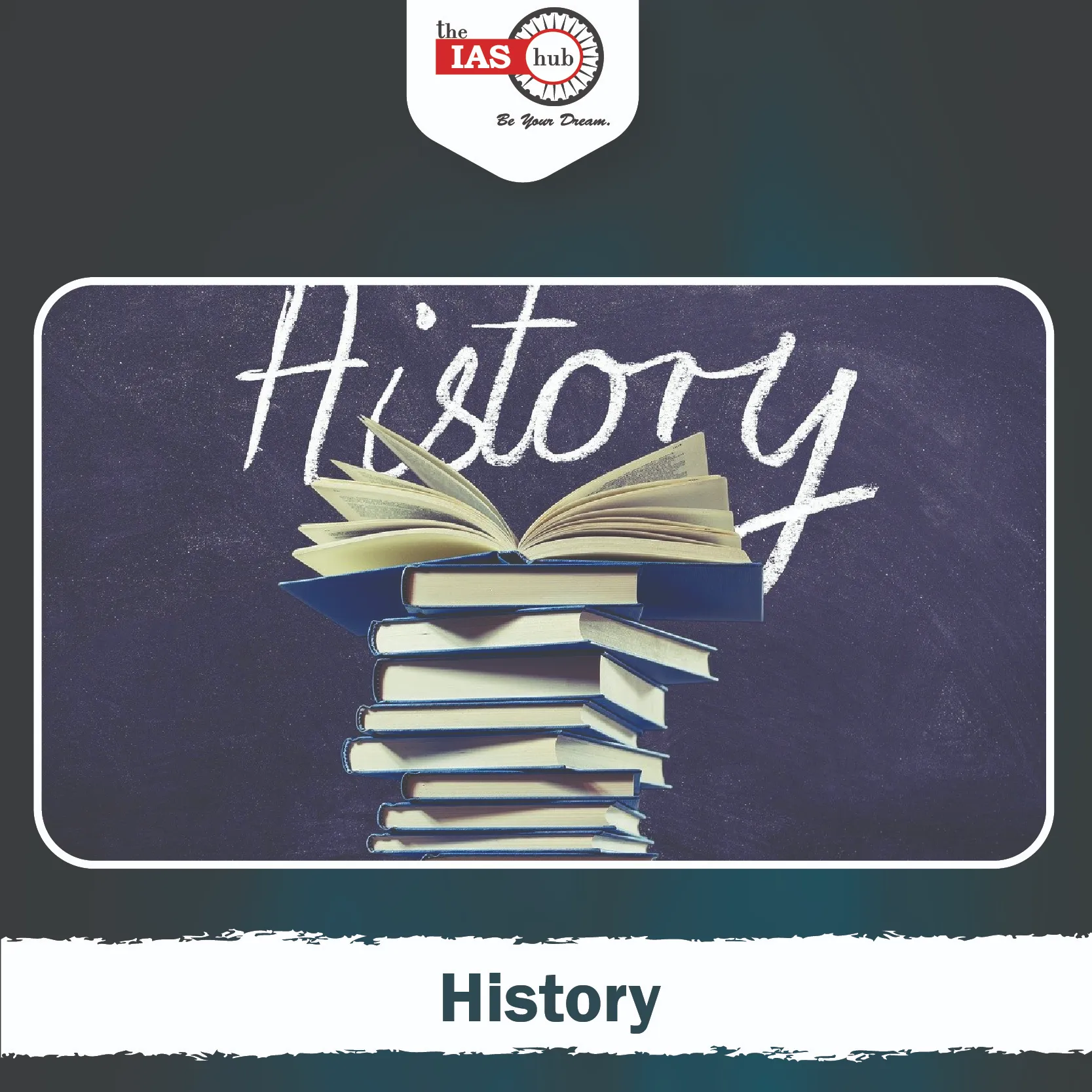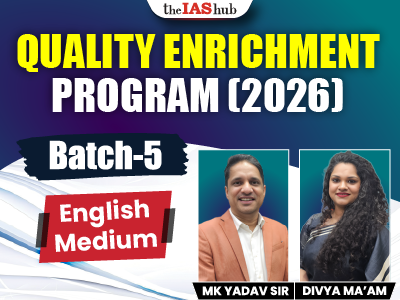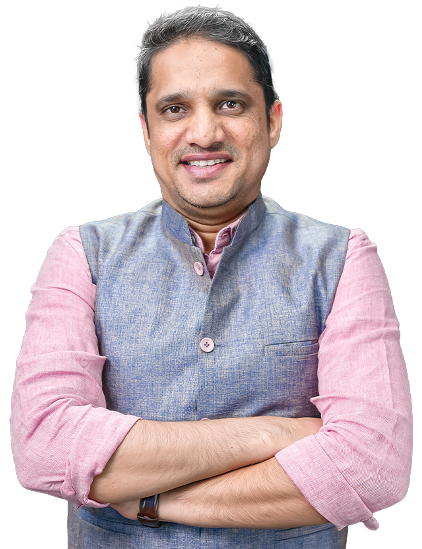Discover everything you need to know about History optional for UPSC. Learn about the syllabus, books, notes, topper strategies, and more in this comprehensive guide.


History is one of the most popular and scoring optional subjects for the UPSC Civil Services Examination. It is a subject that not only helps you understand the past but also provides insights into the present and future. History is a fascinating subject that covers a wide range of topics, from ancient civilizations to modern world events.
In this article, we will cover everything you need to know about History optional, including its syllabus, books, notes, previous year question papers (PYQs), topper strategies, and more. Whether you are a beginner or someone looking to refine your preparation, this guide will help you navigate through the subject with ease.
History as an Optional Subject in UPSC covers ancient, medieval, modern, and world history, providing a comprehensive understanding of historical events and their impact. It is popular due to its overlap with General Studies and the availability of resources. Here are some reasons why History is a great choice as an optional subject for the UPSC exam:
History Optional in UPSC is divided into two papers. Paper 1 covers Ancient and Medieval Indian History, focusing on cultural, political, and socio-economic aspects. Paper 2 deals with Modern Indian History and World History, emphasizing colonialism, freedom struggles, and global historical events.
History optional syllabus is divided into two papers, each covering different aspects of the subject. Here is a brief overview of the syllabus:
| History Optional Paper 1 Syllabus 2025 | |
| Topic | Details |
| 1. Sources | Archaeological sources: Exploration, excavation, epigraphy, numismatics, monuments.
Literary sources: – Indigenous: Primary and secondary; poetry, scientific literature, literature in regional languages, religious literature. – Foreign account: Greek, Chinese, and Arab writers. |
| 2. Pre-history and Proto-history | Geographical factors; hunting and gathering (Paleolithic and Mesolithic); Beginning of agriculture (Neolithic and Chalcolithic). |
| 3. Indus Valley Civilization | Origin, date, extent, characteristics, decline, survival and significance, art, and architecture. |
| 4. Megalithic Cultures | Distribution of pastoral and farming cultures outside the Indus, Development of community life, Settlements, Development of agriculture, Crafts, Pottery, and Iron industry. |
| 5. Aryans and Vedic Period | Expansions of Aryans in India; Vedic Period: Religious and philosophic literature; Transformation from Rig Vedic to later Vedic period; Political, social, and economic life; Significance of the Vedic Age; Evolution of Monarchy and Varna system. |
| 6. Period of Mahajanapadas | Formation of States (Mahajanapada): Republics and monarchies; Rise of urban centres; Trade routes; Economic growth; Introduction of coinage; Spread of Jainism and Buddhism; Rise of Magadha and Nandas. Iranian and Macedonian invasions and their impact. |
| 7. Mauryan Empire | Foundation of the Mauryan Empire, Chandragupta, Kautilya, and Arthashastra; Ashoka; Concept of Dharma; Edicts; Polity, Administration, Economy; Art, architecture, and sculpture; External contacts; Religion; Spread of religion; Literature. Disintegration of the empire; Sungas and Kanvas. |
| 8. Post-Mauryan Period | (Indo-Greeks, Sakas, Kushanas, Western Kshatrapas): Contact with outside world; Growth of urban centres, economy, coinage, development of religions, Mahayana, social conditions, art, architecture, culture, literature, and science. |
| 9. Early State and Society in Eastern India, Deccan, and South India | Kharavela, The Satavahanas, Tamil States of the Sangam Age; Administration, Economy, land grants, coinage, trade guilds, and urban centres; Buddhist centres; Sangam literature and culture; Art and architecture. |
| 10. Guptas, Vakatakas and Vardhanas | Polity and administration, Economic conditions, Coinage of the Guptas, Land grants, Decline of urban centres, Indian feudalism, Caste system, Position of women, Education and educational institutions (Nalanda, Vikramshila, Vallabhi), Literature, scientific literature, art, and architecture. |
| 11. Regional States during Gupta Era | The Kadambas, Pallavas, Chalukyas of Badami; Polity and Administration, Trade guilds, Literature; Growth of Vaishnava and Saiva religions. Tamil Bhakti movement, Shankaracharya; Vedanta; Institutions of temple and temple architecture; Palas, Senas, Rashtrakutas, Paramaras; Polity and administration; Cultural aspects. Arab conquest of Sind; Alberuni; Chalukyas of Kalyana, Cholas, Hoysalas, Pandyas; Local Government; Growth of art and architecture, religious sects, Institution of temple and Mathas, Agraharas, education, and literature, economy, and society. |
| 12. Themes in Early Indian Cultural History | Languages and texts, Major stages in the evolution of art and architecture, Major philosophical thinkers and schools, Ideas in Science and Mathematics. |
| 13. Early Medieval India, 750-1200 | Major political developments in Northern India and the peninsula, Origin and rise of Rajputs, The Cholas (Administration, Village economy, Society), Indian Feudalism, Agrarian economy, Urban settlements, Trade and commerce, Social status of Brahmans and new social order, Condition of women, Indian science and technology. |
| 14. Cultural Traditions in India, 750-1200 | Philosophy (Shankaracharya and Vedanta, Ramanuja and Vishishtadvaita, Madhva and Brahma-Mimansa), Religion (Forms and features, Tamil devotional cult, Growth of Bhakti, Islam and its arrival in India, Sufism), Literature (Sanskrit, Tamil, developing regional languages, Kalhan’s Rajtarangini, Alberuni’s India), Art and Architecture (Temple architecture, Sculpture, Painting). |
| 15. The Thirteenth Century | Establishment of the Delhi Sultanate (Ghurian invasions – factors behind success), Economic, Social and cultural consequences, Foundation of Delhi Sultanate and early Turkish Sultans, Consolidation under Iltutmish and Balban. |
| 16. The Fourteenth Century | “The Khalji Revolution,” Alauddin Khalji (Conquests, territorial expansion, agrarian and economic measures), Muhammad Tughluq (Projects, agrarian measures, bureaucracy), Firuz Tughluq (Agrarian measures, civil engineering, public works), Decline of the Sultanate, Foreign contacts, Ibn Battuta’s account. |
| 17. Society, Culture and Economy in 13th and 14th Centuries | Society (Rural society composition, Ruling classes, Town dwellers, Women, Religious classes, Caste, Slavery under the Sultanate, Bhakti and Sufi movements), Culture (Persian literature, Regional and South Indian languages, Sultanate architecture, Painting, Composite culture), Economy (Agricultural production, Urban economy, Trade and commerce). |
| 18. The Fifteenth and Early Sixteenth Century-Political Developments and Economy | Rise of Provincial Dynasties (Bengal, Kashmir, Gujarat, Malwa, Bahmanids, Vijayanagara Empire, Lodis), Mughal Empire (Babur, Humayun), Sur Empire (Sher Shah’s administration), Portuguese colonial enterprise, Bhakti and Sufi Movements. |
| 19. The Fifteenth and Early Sixteenth Century- Society and culture | Regional cultural specificities, Literary traditions, Provincial architecture, Society, culture, literature, and arts in Vijayanagara Empire. |
| 20. Akbar | Conquests and consolidation of empire, Establishment of jagir and mansab systems, Rajput policy, Evolution of religious and social outlook (Sulh-i-kul), Court patronage of art and technology. |
| 21. Mughal Empire in the Seventeenth Century | Administrative policies (Jahangir, Shahjahan, Aurangzeb), Empire and Zamindars, Religious policies, Nature of the Mughal State, Late 17th Century crisis and revolts, Ahom kingdom, Shivaji and early Maratha Kingdom. |
| 22. Economy and society, in the 16th and 17th Centuries | Population, Agricultural and craft production, Towns, Commerce with Europe (Dutch, English, French companies), Indian mercantile classes, Banking, Insurance, Credit systems, Conditions of peasants, Women, Evolution of Sikh community and Khalsa Panth. |
| 23. Culture during Mughal Empire | Persian histories, Hindi and religious literatures, Mughal architecture, Mughal painting, Provincial architecture and painting, Classical music, Science and technology. |
| 24. The Eighteenth Century | Decline of the Mughal Empire, Regional principalities (Nizam’s Deccan, Bengal, Awadh), Maratha ascendancy under the Peshwas, Fiscal and financial system, Emergence of Afghan power (Battle of Panipat, 1761), Political, cultural, and economic state on eve of British conquest. |
| History Optional Paper 2 Syllabus 2025 | |
| Topic | Details |
| European Penetration into India | The Early European Settlements; The Portuguese and the Dutch; The English and the French East India Companies; Their struggle for supremacy; Carnatic Wars; Bengal-The conflict between the English and the Nawabs of Bengal; Siraj and the English; The Battle of Plassey; Significance of Plassey. |
| British Expansion in India | Bengal-Mir Jafar and Mir Kasim; The Battle of Buxar; Mysore; The Marathas; The three Anglo-Maratha Wars; The Punjab. |
| Early Structure of the British Raj | The Early administrative structure; From diarchy to direct control; The Regulating Act (1773); The Pitt’s India Act (1784); The Charter Act (1833); The Voice of free trade and the changing character of British colonial rule; The English utilitarian and India. |
| Economic Impact of British Colonial Rule | (a) Land revenue settlements in British India; The Permanent Settlement; Ryotwari Settlement; Mahalwari Settlement; Economic impact of the revenue arrangements; Commercialization of agriculture; Rise of landless agrarian labourers; Impoverishment of the rural society.
(b) Dislocation of traditional trade and commerce; De-industrialisation; Decline of traditional crafts; Drain of wealth; Economic transformation of India; Railroad and communication network including telegraph and postal services; Famine and poverty in the rural interior; European business enterprise and its limitations. |
| Social and Cultural Developments | The state of indigenous education, its dislocation; Orientalist-Anglicist controversy, The introduction of western education in India; The rise of press, literature and public opinion; The rise of modern vernacular literature; Progress of Science; Christian missionary activities in India. |
| Social and Religious Reform Movements | Ram Mohan Roy, The Brahmo Movement; Devendranath Tagore; Iswarchandra Vidyasagar; The Young Bengal Movement; Dayanada Saraswati; The social reform movements in India including Sati, widow remarriage, child marriage etc.; The contribution of Indian renaissance to the growth of modern India; Islamic revivalism-the Feraizi and Wahabi Movements. |
| Indian Response to British Rule | Peasant movement and tribal uprisings in the 18th and 19th centuries including the Rangpur Dhing (1783), the Kol Rebellion (1832), the Mopla Rebellion in Malabar (1841-1920), the Santal Hul (1855), Indigo Rebellion (1859-60), Deccan Uprising (1875) and the Munda Ulgulan (1899-1900); The Great Revolt of 1857—Origin, character, causes of failure, the consequences; The shift in the character of peasant uprisings in the post-1857 period; the peasant movements of the 1920s and 1930s. |
| Birth of Indian Nationalism | Factors leading to the birth of Indian Nationalism; Politics of Association; The Foundation of the Indian National Congress; The Safety-valve thesis relating to the birth of the Congress; Programme and objectives of Early Congress; the social composition of early Congress leadership; the Moderates and Extremists; The Partition of Bengal (1905); The Swadeshi Movement in Bengal; the economic and political aspects of Swadeshi Movement; The beginning of revolutionary extremism in India. |
| Rise of Gandhi and National Movements | Rise of Gandhi; Character of Gandhian nationalism; Gandhi’s popular appeal; Rowlatt Satyagraha; the Khilafat Movement; the Non-cooperation Movement; National politics from the end of the Non-cooperation movement to the beginning of the Civil Disobedience Movement; the two phases of the Civil Disobedience Movement; Simon Commission; The Nehru Report; the Round Table Conferences; Nationalism and the Peasant Movements; Nationalism and Working class movements; Women and Indian youth and students in Indian politics (1885-1947); the election of 1937 and the formation of ministries; Cripps Mission; the Quit India Movement; the Wavell Plan; The Cabinet Mission. |
| Constitutional Developments | Constitutional Developments in the Colonial India between 1858 and 1935. |
| Other Strands in the National Movement | The Revolutionaries: Bengal, the Punjab, Maharashtra, U.P. the Madras Presidency, Outside India.
The Left; The Left within the Congress: Jawaharlal Nehru, Subhas Chandra Bose, the Congress Socialist Party; the Communist Party of India, other left parties. |
| Politics of Separatism | The Muslim League; The Hindu Mahasabha; Communalism and the politics of partition; Transfer of power; Independence. |
| Consolidation as a Nation | Nehru’s Foreign Policy; India and her neighbours (1947-1964); The linguistic reorganisation of States (1935-1947); Regionalism and regional inequality; Integration of Princely States; Princes in electoral politics; the Question of National Language. |
| Caste and Ethnicity after 1947 | Backward Castes and Tribes in post-colonial electoral politics; Dalit movements. |
| Economic Development and Political Change | Land reforms; the politics of planning and rural reconstruction; Ecology and environmental policy in post-colonial India; Progress of Science. |
| Enlightenment and Modern Ideas | (i) Major Ideas of Enlightenment: Kant, Rousseau.
(ii) Spread of Enlightenment in the colonies. (iii) Rise of socialist ideas (up to Marx); spread of Marxian Socialism. |
| Origins of Modern Politics | (i) European States System.
(ii) American Revolution and the Constitution. (iii) French Revolution and Aftermath, 1789-1815. (iv) American Civil War with reference to Abraham Lincoln and the abolition of slavery. (v) British Democratic politics, 1815-1850: Parliamentary Reformers, Free Traders, Chartists. |
History Optional Booklist for UPSC includes recommended books covering ancient, medieval, and modern Indian history, along with world history topics. It provides comprehensive resources for conceptual clarity and detailed understanding required for the exam.
Choosing the right books is crucial for your preparation. Here are some recommended booklist for History optional:
Preparing your own notes is one of the best ways to retain information. However, if you are short on time, you can refer to the notes provided by toppers or coaching institutes. Here are some tips for making effective notes:
The History optional question paper is divided into two papers, each carrying 250 marks. The questions are a mix of theoretical and analytical types. Here are some tips for attempting the question paper:
Here is a list of the last five years History Optional PYQ (Previous Year Question Papers) aspirants can download and use in their preparation.
| UPSC History Optional Previous Year Question Papers | |
| Year | Paper |
| 2024 | Download Paper 1 |
| Download Paper 2 | |
| 2023 | Download Paper 1 |
| Download Paper 2 | |
| 2022 | Download Paper 1 |
| Download Paper 2 | |
| 2021 | Download Paper 1 |
| Download Paper 2 | |
| 2020 | Download Paper 1 |
| Download Paper 2 | |
UPSC History optional syllabus is available on the official UPSC website. You can download it and use it as a reference for your preparation. Here are some tips for using the syllabus effectively:
History is a highly rewarding optional subject for the UPSC exam. With the right strategy, resources, and dedication, you can score well in this subject. Make sure to cover the entire syllabus, practice answer writing, and revise regularly. Use the recommended books, notes, and previous year question papers to enhance your preparation. By following these tips, you can master History and increase your chances of success in the UPSC exam.
Are you preparing for UPSC 2025? Join IAShub’s UPSC coaching batches to boost your preparation. Enroll now!
Some of the best books for History optional are "Ancient India by R.S. Sharma," "Medieval India by Satish Chandra," and "Modern India by Bipan Chandra."
To prepare for History optional, understand the syllabus, make a study plan, practice answer writing, and revise regularly. Use recommended books and previous year question papers.
The syllabus for History optional is divided into two papers: Paper-I (Ancient, Medieval, and Modern Indian History) and Paper-II (World History).
To write effective answers, structure your answers well, use headings and subheadings, and support your answers with examples. Practice writing answers within the time limit.


Refine your answer writing skills and elevate your UPSC preparation with personalized support and expert feedback.
Fill out the form to get started with the program or any other enquiries !








Are you dreaming of becoming an IAS officer? Then, IAShub can be your best guide. It is one of the Best IAS Coaching in Delhi. Many students who want to clear the UPSC exam join IAShub for learning. The institute gives both online and offline classes. Their teachers are experienced and helpful. They easily explain every topic. Students also get notes, tests, and tips to do well in the exam.
IAShub is in Delhi and is trusted by many UPSC students. It offers coaching for every part of the UPSC exam – Prelims, Mains, and Interview. The classes are simple and easy to understand. The teachers are experts and guide students in the right way. IAShub is also known for its helpful notes, test series, and answer-writing practice. IAShub is the best coaching in Delhi and also gives UPSC Online Classes. This helps students from any place in India to learn. The online classes are live and also recorded. So, students can watch them anytime. These classes cover the full UPSC syllabus.
Here are some important services provided by IAShub:
The UPSC Civil Services Exam has three parts:
This exam is tough, but with the right guidance, it becomes easy to manage. Students must study smart and stay regular.
IAShub supports students from the beginning to the end. It gives the right books, tests, and notes. The classes are easy to follow, and the teachers are always ready to help. Students get personal doubt sessions too. The test series and answer checking help students learn where they need to do better. Also, free study materials save time and money.
IAShub also guides students during the final stage – the interview. Experts take mock interviews and give useful tips. This full support makes IAShub one of the best IAS coaching in Delhi.
